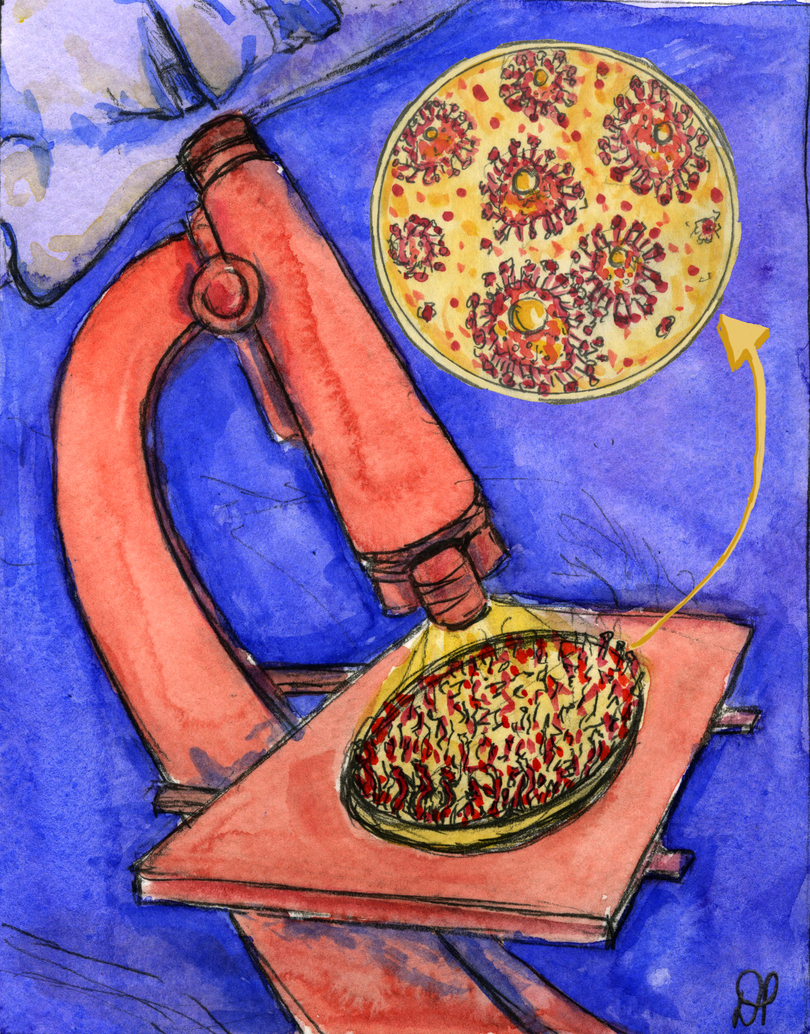SUNY-ESF receives grant for a microscope that will be first of its kind in central New York

Devyn Passaretti | Head Illustrator
SUNY-ESF is replacing a 30-year-old microscope with one that will be more efficient.
SUNY-ESF recently received a $1.12 million grant from the National Science Foundation for a field emission scanning transmission electron microscope.
The State University of New York College of Environmental Sciences and Forestry will soon replace its nearly 30-year-old microscope with a more modern and efficient scanning transmission electron microscope (STEM), which will be the only one of its kind in central New York.
The closest field emission scanning transmission electron microscope is located at Cornell University, a peer institution of Syracuse University. In the past, researchers from SUNY-ESF have had to drive to Ithaca, New York to use Cornell’s microscope.
The microscope will be located in the in the N.C. Brown Center for Ultrastructure Studies at SUNY-ESF in Baker Laboratory. The center enables students, faculty and research staff to receive access, assistance and training in modern microscopy techniques, according to the SUNY-ESF website.
The new microscope’s presence at SUNY-ESF will save a lot of time and effort, said Robert Smith, assistant director at the N.C. Brown Center for Ultrastructure Studies and co-investigator on the NSF grant.
The microscope will allow for frozen sections, Smith said, meaning that samples do not have to be prepared in plastic or be negatively stained but simply be viewed in ice. The microscope will also have an X-ray unit, enabling analysis of elements all the way down the periodic table to boron, Smith said.
Susan Anagnost, director of the N.C. Brown Center and principal investigator on the grant, said the center currently uses film and added that this new microscope will have a CCD camera.
“It will make everything simpler,” Anagnost said. “We can track things faster.”
The staff at SUNY-ESF is patiently awaiting the microscope’s arrival. The microscope is not off the shelf, and is in the process of being built. Anagnost predicts that it will be ready to use in roughly six months.
Anagnost said the idea to write a grant proposal for a new microscope was formed four years ago. The proposal was submitted in January 2015 and was accepted the following August, she said.
SU and the State University of New York Upstate Medical University were also involved in writing the grant. The microscope will serve all parties involved, each with different uses in mind, Smith said.
“One of our goals when we put the grant together was to be able to provide the capabilities of this microscope for a lot of different types of research and researchers,” Anagnost said. “Some microscopes are more specialized, but we wanted this one to have a multiple number of features to be able to support different uses by different people.”
Each grant co-investigator plans to use the microscope for different reasons. Stephan Wilkens, an associate professor of biochemistry and molecular biology at SUNY Upstate, plans on looking at ATP, which is the energy currency for a cell.
Mathew Maye, an assistant professor in SU’s Department of Chemistry, is interested in nanoparticles, and Ivan Gitsov Ivanov, director of the Michael Swarcz Polymer Research Institute and professor and chair of the chemistry department at SUNY-ESF, plans to use the microscope for looking at hydrogels.
Smith plans to look at insect vectored human diseases while Anagnost plans to look at wood cell wall development and how fungi degrade wood.
The majority of the funding for the microscope will come from the NSF and additional funding will come from the Empire State Development’s Division of Science, Technology and Innovation along with the three universities involved, Anagnost said.
In addition to faculty and staff, the microscope will also be utilized by students, Smith said.
“(The microscope) will be incorporated into all of our microscopy classes,” Smith said. “We will teach students how to use this machine, and they can put that on their resume, which could help them receive positions where the machine is being used.”
This specific microscope is used in several fields including automotive, medical, academic and pharmaceutical, Smith said.
“It’s going to be a lot of fun,” Smith said. “It’ll be such a great toy to play around with and see what it can do.”




